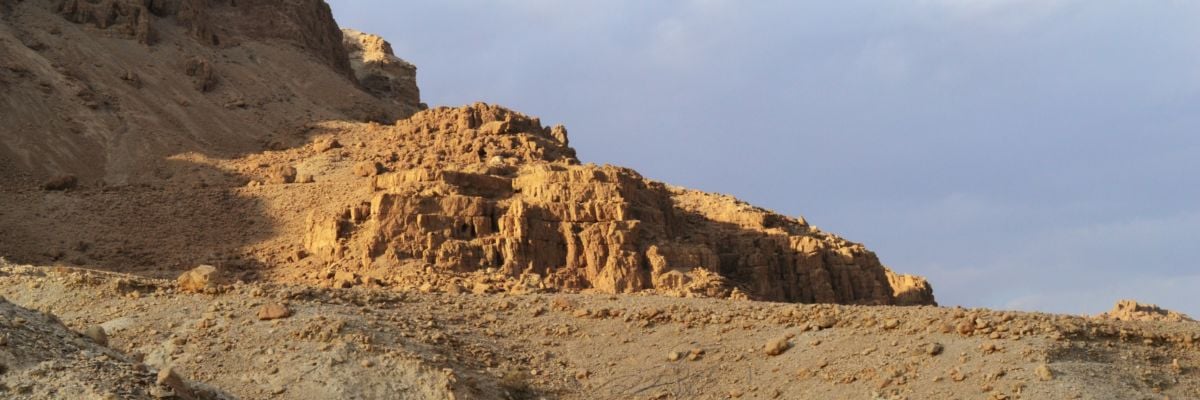
Last week, the Israeli Antiquities Authority announced the discovery of a number of artifacts, including new fragments of the Dead Sea Scrolls.
The fragments come from the Old Testament books of Nahum and Zechariah and are almost 2,000 years old. Written in Greek on parchment (writing material made from animal skin), they are the first new texts to be discovered in six decades.
How were the fragments found?
The discovery resulted from a four-year project to survey the southern Judean desert and find artifacts before they could be looted and illegally sold on the antiquities market.
Looting of archaeological sites has been a major problem. Criminals who remove artifacts from their original settings deprive scholars of clues about those items’ age, origins, and authenticity. Many times, people will sell artifacts to private collectors, and scholars never get to see them.
Worse, it can be much harder to detect genuine artifacts if there is no record of when and how they were discovered. Many items recently appearing on the antiquities market have turned out to be frauds.
The Israeli government therefore decided to do a systematic survey of the Dead Sea area to find what’s there before looters could cart it off.
What are the Dead Sea Scrolls?
The dry, desert environment around the Dead Sea—the lowest body of water on earth—allows delicate artifacts like scrolls to survive the centuries. In more humid climates, they would rot over time.
Researchers began discovering the original Dead Sea Scrolls in the 1940s. Most of them belonged to the library of a mysterious sect that lived at a site called Qumran, on the Dead Sea’s northwestern shore. Most scholars think this sect was a Jewish group known as the Essenes, though this is debated.
The original Dead Sea Scrolls provided the earliest copies of biblical manuscripts ever discovered, as well as many lost works of Jewish religious literature. This greatly broadened our knowledge of the ideas circulating among Jews at the time and helped situate early Christianity in a broader Jewish context.
Where did the new fragments come from?
The newly discovered fragments do not come from the Qumran sect. Instead, they belonged to Jewish refugees who were hiding from the Romans during the Bar Kokhba revolt (A.D. 132-136), a period in which Palestinian Jews briefly threw off Roman rule.
A group of forty Jewish men, women, and children hid from the Romans in a high cliffside cave near the Dead Sea. It was unsafe to come out of the cave, and they starved to death. When their skeletons were discovered, the site became known as the Cave of Horrors.
Among their possessions were artifacts the Israeli authorities announced, including the scrolls from which the new fragments come.
What do the fragments contain?
When scholars examined the tiny fragments, they discovered text from the minor prophets Nahum and Zechariah.
Nahum likely ministered in the 600s B.C. His prophecy pronounces a doom against the Assyrian city of Nineveh, better known as the repentant city in the book of Jonah.
Zechariah lived in the 500s, and his book is the longest of the minor prophets. It contains exhortations to rebuild the Jerusalem temple, which the Babylonians had destroyed in 587 B.C., as well as important messianic prophecies.
The newly discovered fragments come from passages from the prophets that read:
The mountains quake before him [God], the hills melt; the earth is laid waste before him, the world and all that dwell therein. Who can stand before his indignation? Who can endure the heat of his anger? His wrath is poured out like fire, and the rocks are broken asunder by him (Nah. 1:5-6).
These are the things that you shall do: Speak the truth to one another, render in your gates judgments that are true and make for peace, do not devise evil in your hearts against one another, and love no false oath, for all these things I hate, says the Lord (Zech. 8:16-17).
In antiquity, the books of the twelve minor prophets did not circulate separately but were bound together in a single scroll known as The Twelve.
It is likely that the refugees in the Cave of Horrors had two copies of this scroll because the handwriting on the fragments comes from two different scribes.
What language are the fragments in?
While most Dead Sea Scrolls are written in Hebrew and Aramaic, some are in Greek. That’s the case here, though the name of the Lord (YHWH) is written in Hebrew letters because of its sacredness.
This provides evidence that Jews in Palestine in this period did not exclusively speak Aramaic. Many were more comfortable in Greek and wished to have copies of their scriptures in this language.
Why will they interest biblical scholars?
The primary significance of the new fragments will be what light they may shed on the original wording of Nahum and Zechariah.
As scribes hand-copied works of literature in the ancient world, they occasionally made mistakes, such as altering spelling, transposing words, and using synonyms. Most of these variations are minuscule and do not affect meaning, but they create a question of what the original text said.
The science of textual criticism compares different manuscripts and seeks to establish the original reading of a text. The newly discovered fragments add a bit more data for scholars to use.
Why will they interest apologists?
It will be interesting to learn whether the new fragments are taken from the Septuagint—the main Greek translation of the Old Testament—or from a different Greek version.
The issue is significant because an outdated theory holds that in the first century, there were two biblical canons—a “Palestinian canon” used by Jews in the Holy Land and an “Alexandrian canon” used elsewhere. It was claimed that the Palestinian canon corresponded to the Hebrew Bible and the Protestant Old Testament, while the Alexandrian canon corresponded to the Septuagint and the Catholic Old Testament.
The “two canons” view has been discredited on other grounds, but if it turns out that the fragments are from the Septuagint, it will be further evidence that Palestinian Jews used the Septuagint.
What else did the survey find?
In addition to the scroll fragments, the survey also recovered other artifacts. These included coins minted by Jewish rebels in the Bar Kokhba period, arrowheads, spear points, fabric scraps, sandal parts, and a fine-toothed comb used to remove lice.
Two of the items announced came from much earlier than the Bar Kokhba period. Israel has been inhabited since very ancient times, and the archaeologists also found the partially mummified skeleton of a child from c. 4,000 B.C. The child was between six and nine years old and had been buried in the fetal position, covered by a cloth.
The oldest artifact the survey announced was even older. It was a woven basket with a lid that dated to around 8,500 B.C., making it more than 10,000 years old. Surveyors were very interested to see what it contained, but when they removed the lid, all they found was a little sand.
As fascinating as these older artifacts are, the most significant finds are the scroll fragments, which add to the data that biblical scholars have available to determine the original readings of Nahum and Zechariah, along with additional evidence for apologists.



